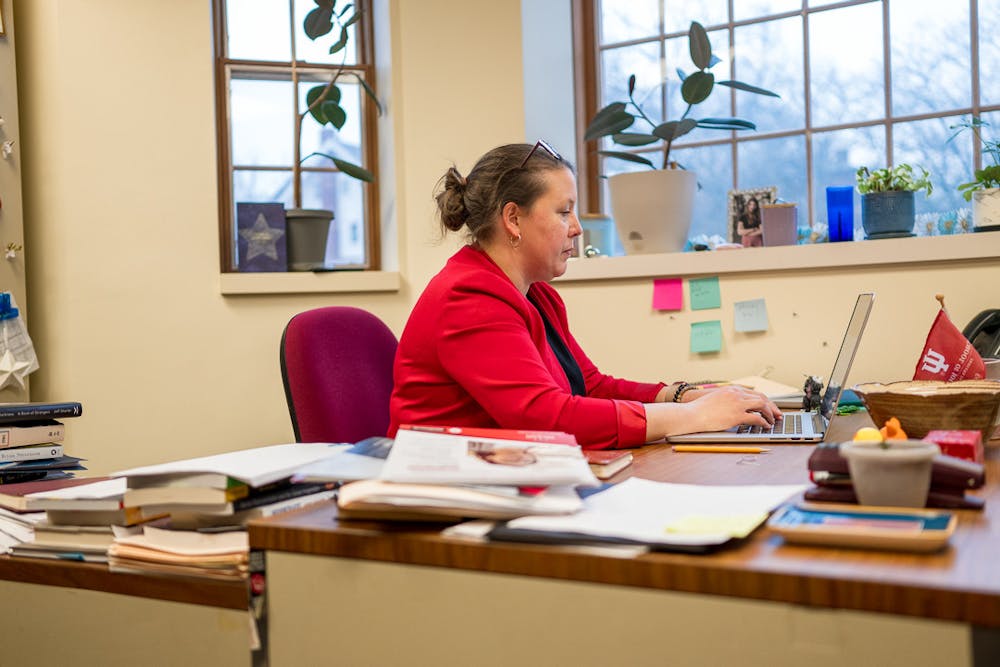Miami University released new course load requirements to its deans across campus on Dec. 3, 2024. The requirements are calculated based on the workload equivalent (WLE) system, a new system implemented by Miami. The revised requirements, which would go into effect fall of 2025, would increase the number of courses for most professors.
Quality vs. quantity
As professors are required to teach more classes next semester, faculty, like David Prytherch, a professor of geography, are wondering how they will maintain the same level of rigor in their teaching.
Prytherch said faculty members are drawn to Miami because of its emphasis on undergraduate education. He is worried that the new requirements will be detrimental to those students.
“There are fewer and fewer faculty members who are being asked to teach more and more sections,” Prytherch said. “Naturally, it’s hard to maintain the quality.”
Some professors are already preparing to cut back on the material they teach. Adding even a single class to a professor’s workload results in hours of planning, preparation and grading. Professors like Lewis Magruder in the theater department said time constraints will be a real concern.
“I just have to narrow down what I teach,” Magruder said.“I can’t spend as much time with grading.”
Class changes
As professors are forced to make concessions, Prytherch said writing assessments may be cut. This year, Miami also raised the minimum number of students required for a class to run from 12 to 15. With more classes to teach and more students per class, qualitative assessments and individual feedback won’t be possible for many professors.
“It’s just going to be more large lecture classes and multiple choice midterms and finals so that they can pack in the credit hours,” Magruder said.
Prytherch said he and other professors want their students to be able to read texts critically and synthesize information, but these skills require time and concentrated effort with individual students.
“We want to be able to incorporate writing in our classes,” Prytherch said, “but it’s getting harder and harder.”
Enjoy what you're reading?
Signup for our newsletter
Impact on students
Magruder said with heavier course loads, they won’t be able to give students the same level of attention. They will have more trouble saying yes to things like advising student clubs and mentoring for undergraduate honors theses, a major component of the honors program.
“It’s not going to be the sort of relationships we used to have with students,” Magruder said.
Melany Fisk, a professor of biology, said she worries undergraduate research opportunities will disappear as professors take on more courses. Fisk currently supervises eight undergraduate students in her lab. One is writing a paper for her independent study, so Fisk said she meets with the student weekly to provide feedback.
“I’ve been doing that for years,” Fisk said. “I take students into the field, we work in the lab, we do projects together and they learn so much more that way.”
Fisk said many professors would have to reduce hours spent with undergraduates in the lab or even close the labs altogether. She also said graduate students will feel the impacts as well.
“The less time we have for writing our papers and grants,” Fisk said, “the less graduate students we’ll be able to support.”
Faculty left out
The specifics of reshuffling course load requirements were not discussed with the professors beforehand. Both Prytherch and Fisk said the speed at which the university moved forward with the decision was startling.
“They didn’t have a conversation with [the faculty] about it,” Magruder said.
The Miami Student reached out to Miami Provost Elizabeth Mullenix, but she was not available for a formal interview on the topic prior to publication.
According to Ohio code, section 3345.45, faculty cannot collectively bargain for their workloads. However, some professors feel they should have been consulted about these changes before they were announced. Professors like Fisk feel that the updates to the workload system are unfair and could have been better handled if teaching staff were brought into the conversation.
“I’m not sure what’s driving these decisions,” Fisk said. “If the Board of Trustees is mandating this, I’m not sure whether the folks behind this truly understand what we do in research and what we do in the classroom.”
The number of classes professors are required to teach is calculated based on the annual reports professors write at the end of each year. The reports include things like the number of courses they taught, student outcomes, research, publications and grants. The new requirements were calculated based on annual reports from the last five years, including 2020 and 2021 when COVID-19 significantly impacted universities around the country.
“They’re judging us on a time in which, for many, the pandemic really hit our research,” Prytherch said.
Fisk said professors are already feeling the strain. Fisk, who arrived in 2007, started by teaching roughly three courses a year. Starting in the fall of 2025, she will be teaching three courses a semester. Heavy workloads, combined with hours of planning, grading, mentorship and research have been overwhelming for some, causing resignations.
“Many of the faculty that I know are of the lowest morale that we’ve been since I’ve been here,” Fisk said.
University Senate response
The University Senate passed three resolutions Monday afternoon, in response to the requirements.
The first resolution asked that the new WLE requirements be put on pause until Provost Elizabeth Mullenix makes a presentation and the Senate has discussed it. The second and third resolutions requested that discussions over workload norms be brought to the Academic Policy Committee for discussion.
The Senate moved to waive its usual two-week waiting period to approve the resolutions to ensure they would be presented to the Board of Trustees at their monthly meeting in February.




